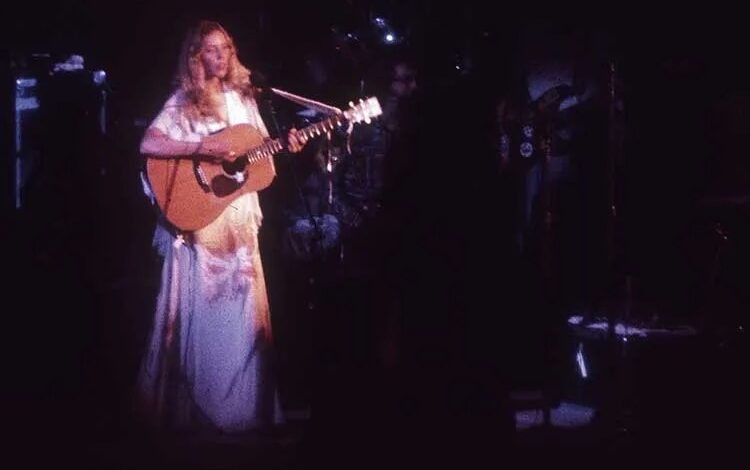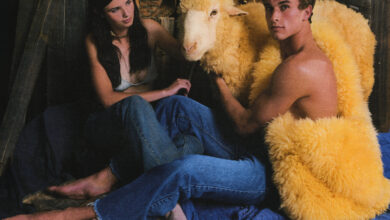“Help Me”—Learn to Play a Rare Solo Version of the Joni Mitchell Classic

Joni Mitchell’s effervescent “Help Me,” from the breakthrough album Court and Spark, was her biggest hit single—breaking the Top Ten in 1974. The album track is lushly arranged with layers of electric guitar, keyboard, flute, saxophone, and more over bass and drums, courtesy of the jazz fusion band the L.A. Express. Mitchell’s strummed acoustic guitar kicks off the song and continues throughout, but the details of her playing are tough to discern in the mix. So the release of a solo demo on the new Joni Mitchell Archives, Vol. 3: The Asylum Years (1972–1975), reviewed in the January/February 2024 issue, is especially welcome and illuminating.

The demo, transcribed here, comes from early sessions for Court and Spark in the summer of 1973. The basics of the guitar part align with the album track, but there are also some intriguing musical and lyrical differences between this draft and the final version.
First, get into Mitchell’s unusual tuning, lowest note to highest, C G E E B E, a Cmaj7 tuning with unison Es on the fourth and third strings (fourth string tuned up, third string down). Contrary to what you might expect, Mitchell does not play in C—in fact, C only appears briefly as a transitional chord. Instead, her home chord is an Asus2.
Notice that essentially two chord shapes are at work in the song. There is a two-finger shape on the low strings that you play at frets 9 (Asus2), 2 (Dsus2), 4 (E5), 12 (Cmaj7), and 7 (G6). And then there’s a one-finger barre at frets 7 (Gmaj7), 5 (Fmaj7), 2 (Dmaj7), and 10 (Bbmaj7). Over all these barre shapes, she adds an embellishment on the fifth string two frets above the barre, which turns the chord to a maj13. Check out an example in measures 3–8 of the interlude notation. During the verses and bridge, when she’s on a maj7 barre chord, she toggles between maj7 and maj13, usually splitting each measure into two beats of maj7 and two of maj13.
Mitchell’s rhythm is highly syncopated throughout. She often changes chords on offbeats, in sync with her vocal phrasing, and also breaks up the 4/4 groove with some single measures of 3/4. Emulating her feel requires letting go of the typical boxy rhythms of folk rock.
It’s interesting to note the lyrics from this demo that later changed: “boogie-woogie man” became “sweet-talking ladies man”; “cold, cold ash” became “smoke and ash”; and the chorus closing phrase “and we love our freedom” became “but not like we love our freedom,” for instance.
The intro and outro diverge from the album track as well. In the intro, Mitchell dips from Asus2 down to a Dsus2 (and a quick C); the album intro stays on Asus2. And the demo ends with repetitions of “Help me, I think I’m fallin’” that land quite differently than the breezy instrumental outro on Court and Spark. In the interview accompanying the archival release, she refers to the demo ending as “a cry chant, a cry of despair.”
Due to copyright restrictions, we are unable to post notation or tablature for this musical work. If you have a digital or physical copy of the March/April 2024 issue of Acoustic Guitar magazine, you will find the music on page 57.
This article originally appeared in the March/April 2024 issue of Acoustic Guitar magazine.

Jeffrey Pepper Rodgers
Jeffrey Pepper Rodgers, founding editor of Acoustic Guitar, is a grand prize winner of the John Lennon Songwriting Contest and author of The Complete Singer-Songwriter, Beyond Strumming, and other books and videos for musicians. In addition to his ongoing work with AG, he offers live workshops for guitarists and songwriters, plus video lessons, song charts, and tab, on Patreon.




